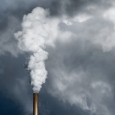Environmental Protection Agency
In 1970, Richard Nixon issued an executive order, Reorganization Plan Number 3, transferring 15 units from existing federal organizations into the independent Environmental Protection Agency (EPA). The EPA is designed to defend against environmental hazards that are deemed a significant risk to the environment or public health by issuing and enforcing regulations, and laws that are already on the books. The agency also issues grants, educates the public, conducts and publishes research.
Commentary
Cry Wolf Quotes
Clean air, land and water are vital to all of us. But so are jobs, food, clothing and housing. We have to weigh the total impact on the environment along with the economic and social costs in order to clean up.
Laws dealing with complex and technical problems were passed with much emotionalism, little debate, and even less of a data base for support.
Because of our guilt—and because of the media’s espousement (sic) of the movement—laws were passed which asked industry and the American consumer for the impossible. The members [of Congress] admitted they did not know what could actually be done to clean up our environment, how long it would take or how much it would cost. But they went ahead anyway in the spirit of political expediency to ramrod through measures that would affect millions of people and billions of dollars…



